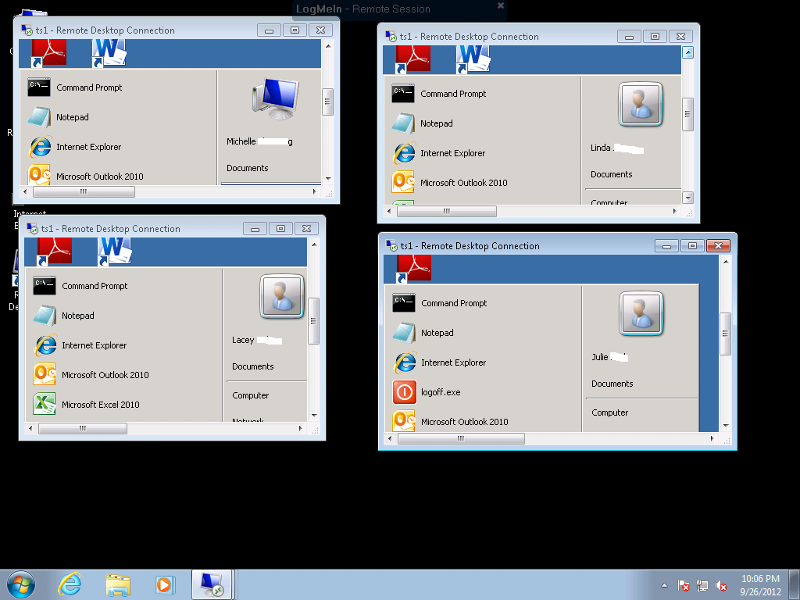

- WINDOWS TERMINAL SERVICES HOW TO TELL IF USER IS LOGGED IN .EXE
- WINDOWS TERMINAL SERVICES HOW TO TELL IF USER IS LOGGED IN WINDOWS
I again ran qwinsta /server:10.0.0.2 which verified session 1 had been disconnected. In my case I ran rwinsta 1 /server:10.0.0.2 Where IDis the process ID of the session you wish to terminate, and yourservernameis the name or IP address of the server you wish to manage. To disconnect the admin session with ID=1 I’ll run the following from a command prompt: rwinsta ID /server:yourservername You can see the Administrator account is logged into session 0 and the admin account is logged into session 1. In my case I ran qwinsta /server:10.0.0.2 Where yourservernameis the name or IP address of the server you wish to manage. Start a command prompt and type qwinsta /server:yourservername You can easily accomplish this by mapping a network drive to a share on the target server. Method 2Īuthenticate to the server you wish to manage. You should now be able to login to the target server via Terminal Services. Right click on the session you wish to disconnect and select Disconnect. Select your server from the left pane, then select the Sessionstab from the right pane.
WINDOWS TERMINAL SERVICES HOW TO TELL IF USER IS LOGGED IN WINDOWS
The Session column will display the Windows profile/user that has the session opened. Click on the MicroKernel Sessions tab to view the opened sessions from each user. Type in the name or IP address of the server you wish to manage. Go to the Windows Start button, Actian PSQL 12 folder, PSQL Monitor.

Next right click on All Listed Serversand select Connect to Computer. This will launch the local copy of Terminal Services Manager. You can normally run the Terminal Services Manager program on another server, or even from a Windows XP workstation, to disconnect Terminal Services connections by clicking Start – Run and then typing %SystemRoot%\system32\tsadmin.exe You can use either of the following methods to remotely disconnect Terminal Server sessions. Every once in a while I’ll get the “You exceeded the allowed connection count” message when trying to connect to a server via RDP, because previous sessions were not disconnected correctly.

WINDOWS TERMINAL SERVICES HOW TO TELL IF USER IS LOGGED IN .EXE
exe will show similar information)ģ) In this example, the Administrator is going to shadow the user1 session which is session 3. If you are using an account with administrative privileges that isn’t the named Administrator account, you must run in administrator mode (right click on cmd and click run as administrator)Ģ) Type quser.exe to determine the session number of the user session you want to shadow.Ĭ:\Users\puter>quser.exe (note: typing “>qwinsta” without. You must be using an account with administrative privileges. To shadow another user’s sessions in Windows Server 2016 in Workgroup mode, use the following steps:ġ) Open command window by clicking start, CMD. When the server is in Workgroup mode (not connected to domain) the Remote Desktop Services Manager page is not accessible in Server Manager. If the server is connected to a domain, you can go to server manager, RDS Manager, and right click on current sessions to shadow and connect. This post is about how to shadow a user session if the Windows Remote Desktop Server is not connected to a domain.


 0 kommentar(er)
0 kommentar(er)
